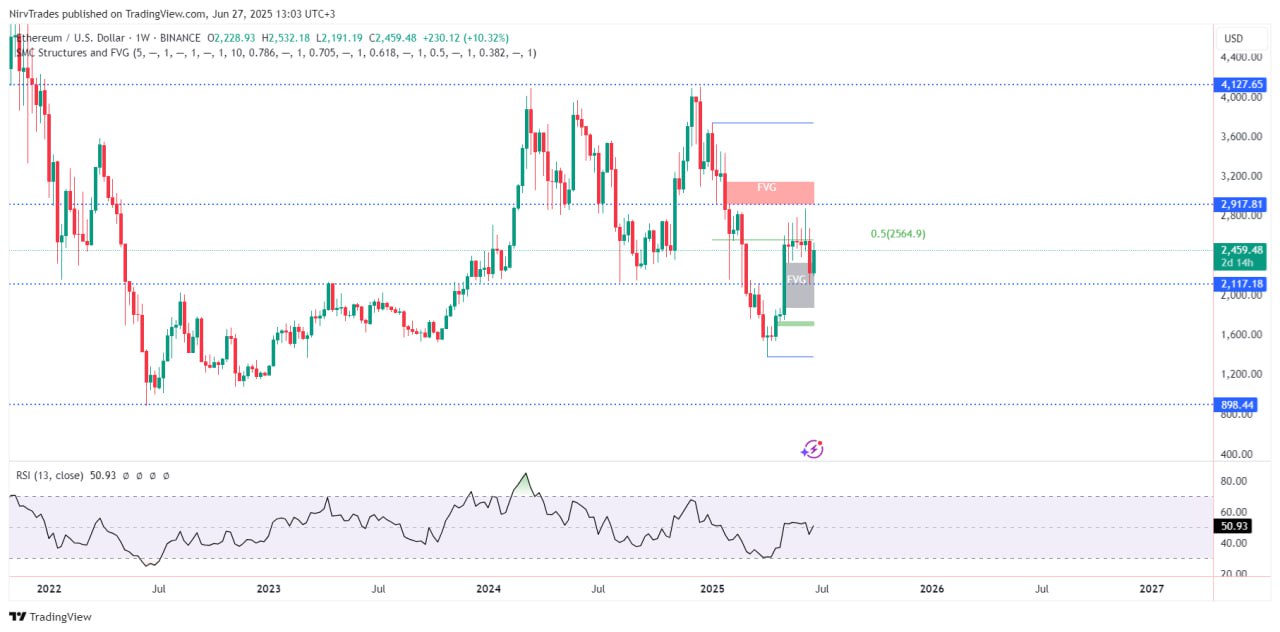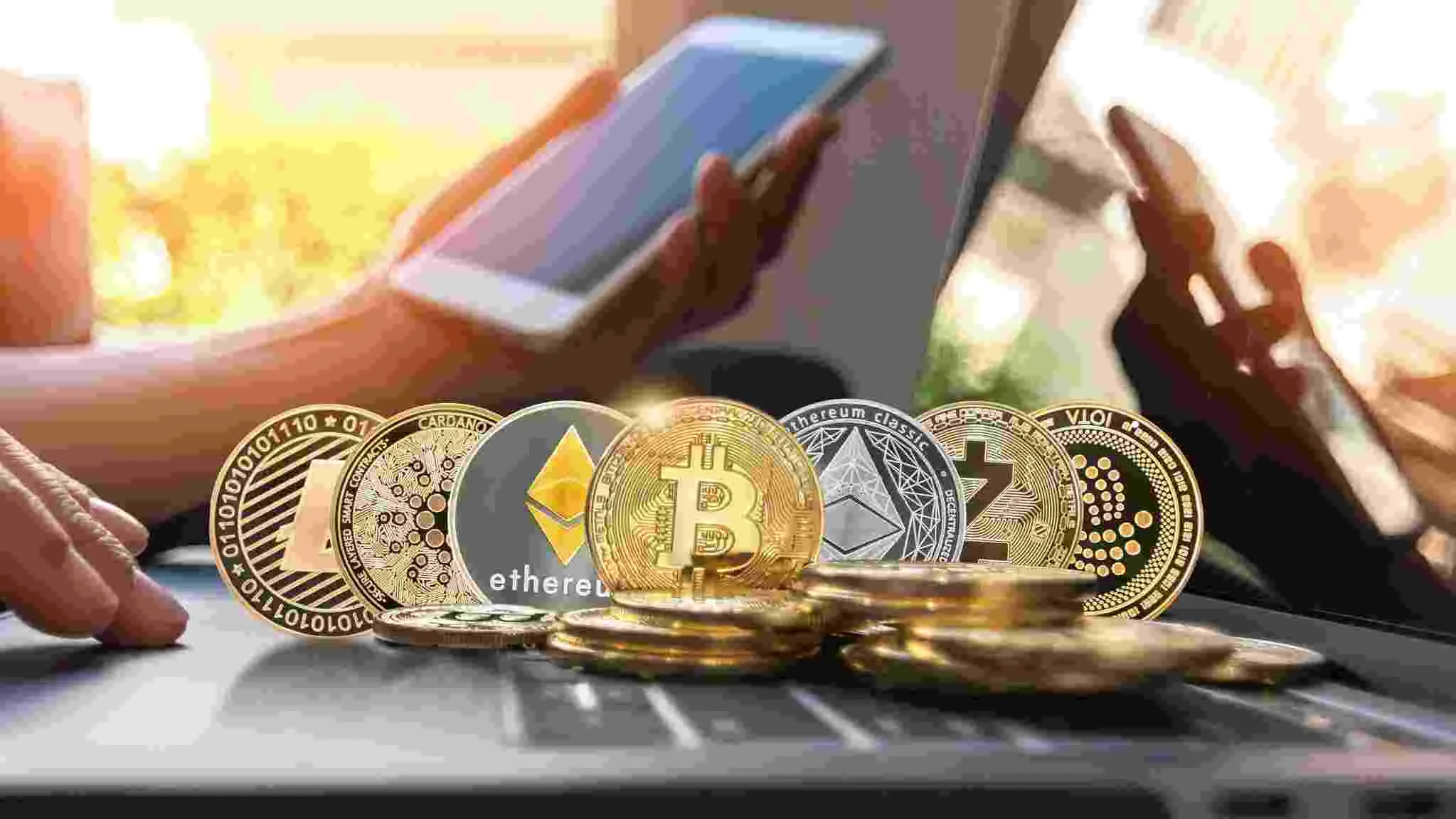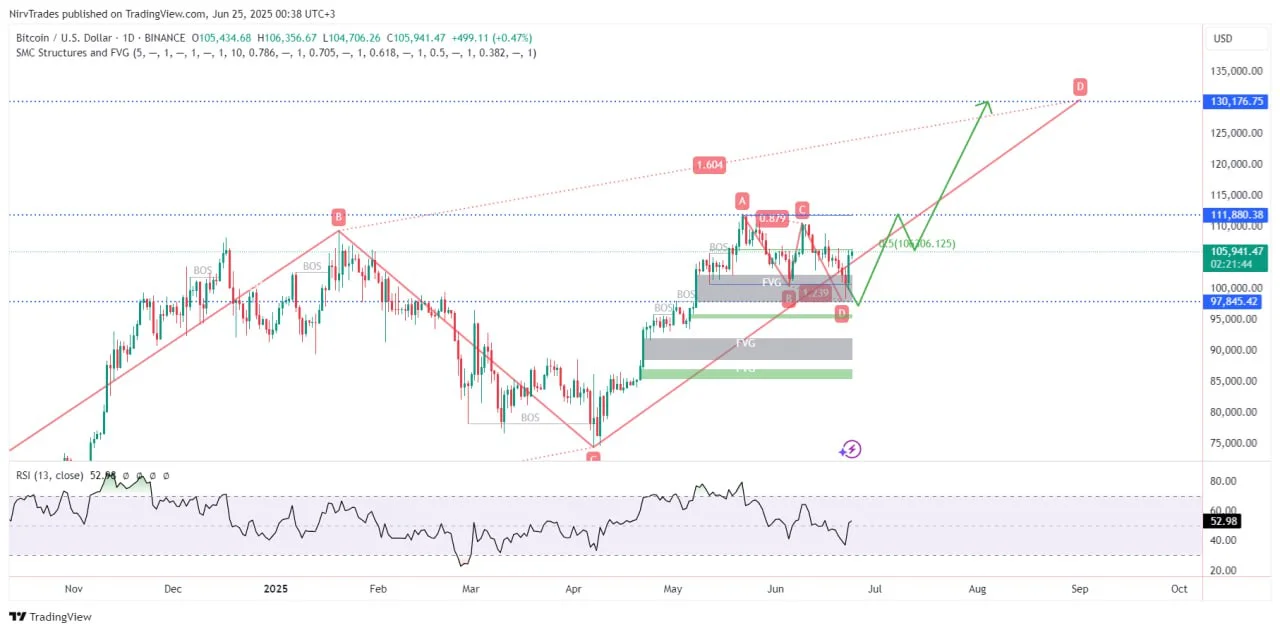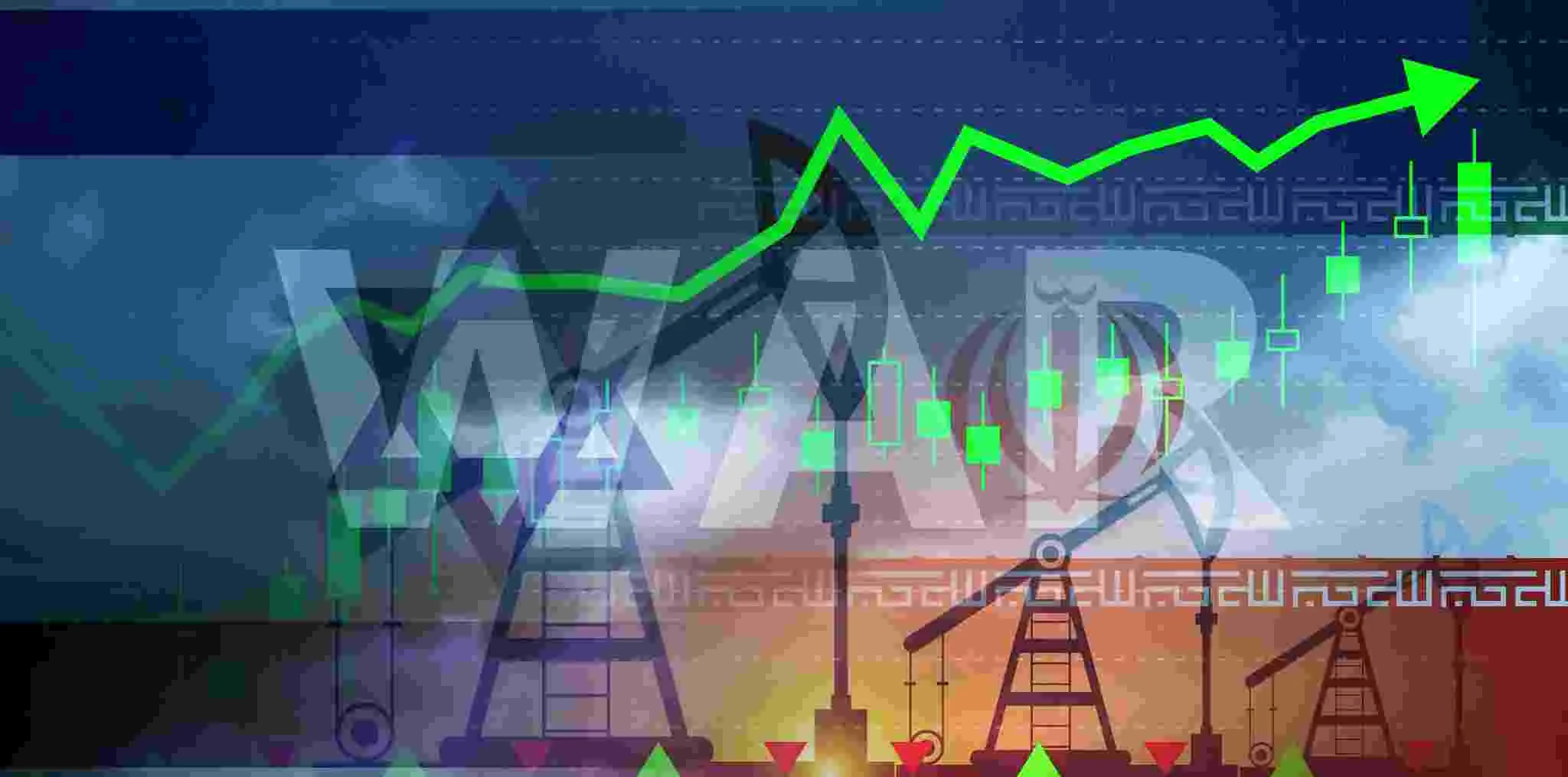Could Ethereum Reach $10,000?
AI Summary
- Ethereum, created by Vitalik Buterin in 2015, is a platform for building decentralized applications (dApps) through smart contracts, revolutionizing online interactions.
- Ethereum shifted to Proof of Stake in 2022, reducing energy usage and improving scalability, with the potential to reach $10,000 as demand for dApps rises.
- Despite challenges like high gas fees and competition, Ethereum's consistent upgrades and real-world utility position it as a foundational digital asset with long-term potential.
While most of the spotlight in the early days was on Bitcoin as the first digital currency, Ethereum launched in 2015 by Vitalik Buterin introduced a completely new concept—not just digital money, but a full ecosystem that allows people to build decentralized applications without intermediaries.
1. The Origins of Ethereum
Ethereum emerged during a time when the focus was solely on Bitcoin. Its goal was to start a new system where anyone could build decentralized applications (dApps) without needing centralized control or third parties.
2. More Than Just a Cryptocurrency
Ethereum is not just a currency named ETH—it’s a complete platform built on blockchain technology. Instead of being just a payment method, it’s an open ecosystem where developers can build decentralized apps powered by smart contracts. These contracts are coded agreements that automatically execute when certain conditions are met—revolutionizing the way we think of online interactions.
3. Smart Contracts: A Game Changer
Smart contracts eliminate the need for middlemen like lawyers or notaries. Once conditions are met, the contract executes automatically and cannot be changed or halted once published on the blockchain—ensuring security, automation, and transparency across industries like finance, insurance, and gaming.
4. Ethereum vs. Bitcoin: What’s the Difference?
While both are based on blockchain, Bitcoin is focused on being a digital store of value. Ethereum, in contrast, is a development platform for the decentralized web. In short:
Bitcoin is digital gold. Ethereum is the operating system of Web3.
5. dApps: A New Digital Revolution
Ethereum enabled the creation of dApps—applications that run on the blockchain without relying on centralized servers. From DeFi lending platforms and NFT marketplaces to blockchain games, users can now truly own their digital assets.
6. The Big Upgrade: Ethereum 2.0+
In 2022, Ethereum shifted from Proof of Work to Proof of Stake, reducing energy usage by over 99%. The next milestone is sharding, which will allow the network to process thousands of transactions per second, improving speed and scalability.
7. ETH Token: More Than a Payment Tool
ETH is used not only for trading but also for:
- Paying gas (transaction) fees
- Buying NFTs
- Staking to earn rewards
- Providing collateral in DeFi platforms
8. Ethereum’s Challenges
Despite its advantages, Ethereum has some challenges:
- High gas fees during network congestion
- Rising competition from faster and cheaper blockchains
- Smart contract vulnerabilities and price volatility
However, its consistent upgrades help it maintain leadership.
9. Is ETH a Smart Investment?
Many analysts believe Ethereum is more than just an investment—it’s a foundational digital asset in a constantly growing ecosystem. As demand for decentralized apps rises, ETH becomes more valuable, enhancing its long-term potential.
Technical Outlook
ETH has been moving sideways on the weekly chart since June 2022, between:
- Resistance: $4,125
- Support: $898.44
Currently, it is fluctuating between:
- New Resistance: $2,917.81
- New Support: $2,117
A breakout above $2,917 could lead to a test of $4,127. The bullish scenario is supported by the RSI holding above the 50 level.
Final Thoughts
Ethereum is poised to reshape the internet and the digital economy by enabling a decentralized future built on freedom, security, and innovation. With its unmatched development pace and growing real-world utility, reaching $10,000 is no longer just a dream—it’s a possibility.
Top 3 Altcoins to Trade in July 2025
With the rapid development of the cryptocurrency market and increasing investor interest in alternative assets that combine advanced technology with solid fundamentals, certain digital currencies are emerging as top options for trading in 2025.
In this article, we highlight three of the most promising altcoins: Ethereum (ETH), Solana (SOL), and Cardano (ADA), analyzing their fundamentals and technical outlooks to help you make smart trading decisions.
Ethereum (ETH)
About the Coin
Ethereum is the second-largest cryptocurrency by market cap and the backbone of many decentralized applications (dApps) and smart contracts. Launched in 2015, it's a leader in the DeFi and blockchain space. Its native token, ETH, is used for transaction fees and powering apps on the network.
Why Is It a Good Trading Option?
- Wide adoption: Ethereum is the foundational platform for most DeFi and NFT projects, making it a core element in the crypto ecosystem.
- Ongoing upgrades: In 2025, Ethereum continues to evolve with Layer 2 scaling improvements, boosting efficiency and reducing fees.
- Institutional demand: Major investors are backing ETH, strengthening its value and market stability.
- Strong developer community: Consistent innovation and application development are guaranteed by its active ecosystem.
Technical Analysis
ETH is in a sideways trend on the weekly chart since June 2022, ranging between $4,125 resistance and $898.44 support. Currently trading between $2,917.81 resistance and $2,117 support, it could target $2,917 and possibly $4,127 if resistance breaks. RSI above 50 supports the bullish case.
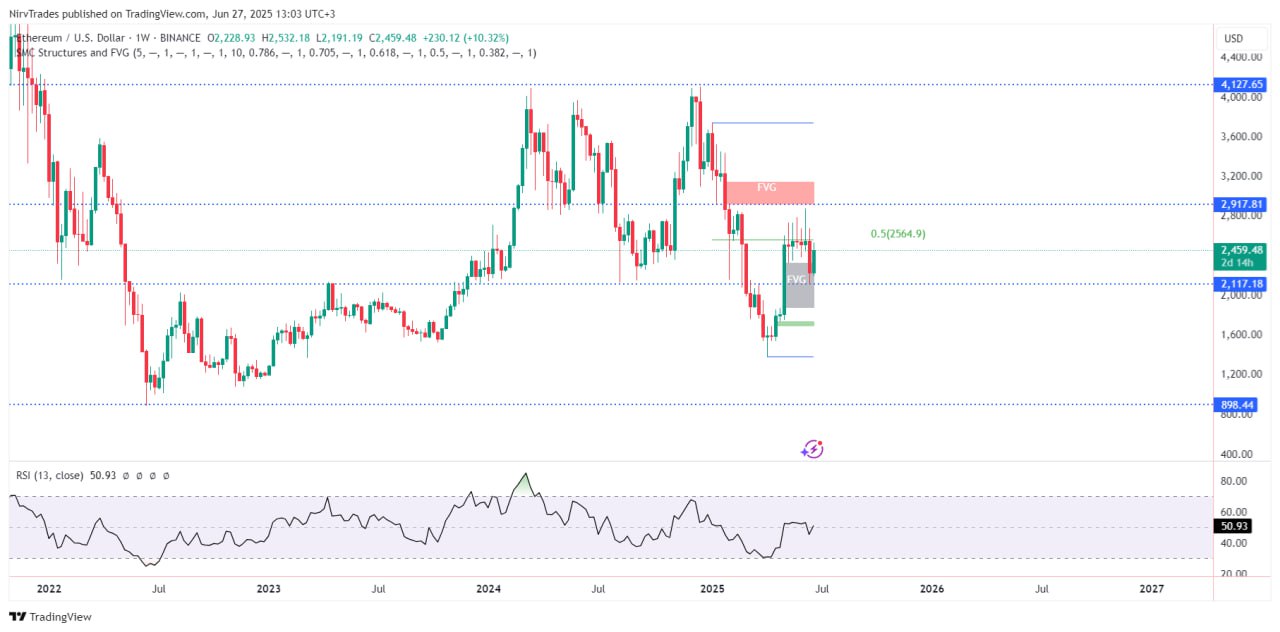
Solana (SOL)
About the Coin
Solana is a high-speed blockchain launched in 2020, known for its scalability and low fees. It uses a hybrid consensus mechanism combining Proof of History (PoH) and Proof of Stake (PoS). SOL is used for transaction fees and to power decentralized apps.
Why Is It a Good Trading Option?
- High throughput: Solana can handle thousands of transactions per second, making it one of the fastest chains available.
- Growing ecosystem: It hosts a wide range of DeFi, NFT, and blockchain gaming projects.
- Developer-friendly: Easy app development and strong partnerships attract constant innovation.
Technical Analysis
SOL is moving sideways between $294.33 resistance and $115.89 support on the weekly chart. A bullish ABCD harmonic pattern completed at $115.89, reaching its first target at $178.46. The next potential move is toward $294.33, supported by RSI above 50.
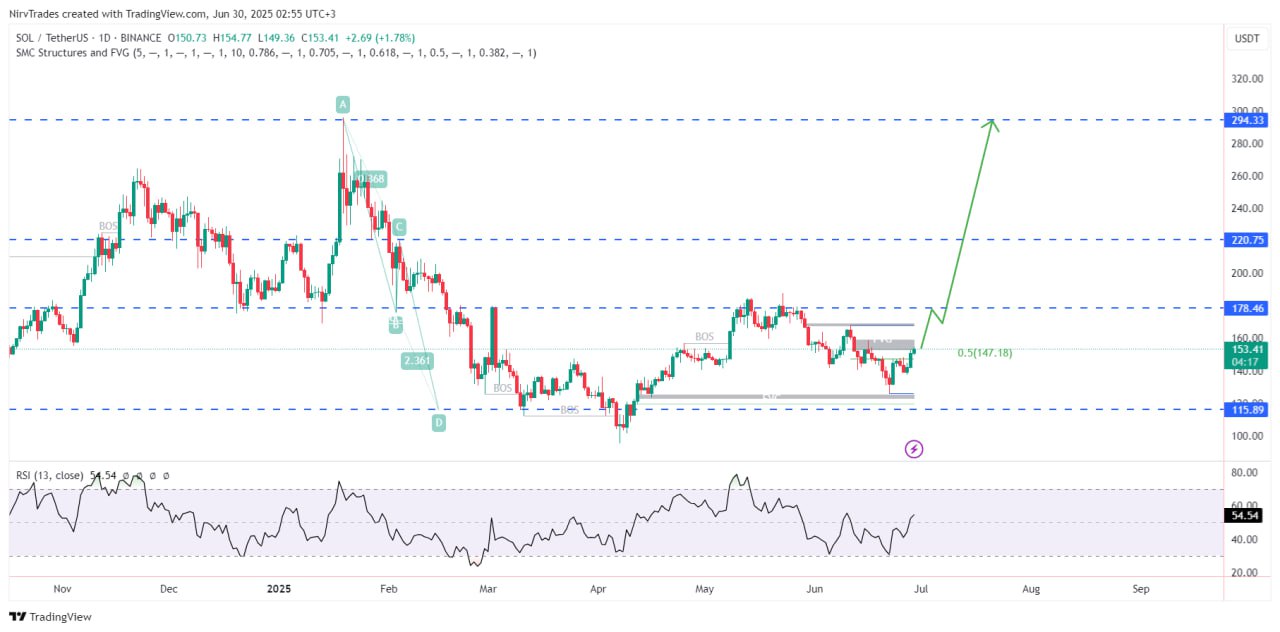
Cardano (ADA)
About the Coin
Cardano is focused on scalability, security, and sustainability. It was launched in 2017 by Charles Hoskinson, a co-founder of Ethereum. Using a PoS mechanism called Ouroboros, Cardano is known for its scientific and peer-reviewed approach to blockchain development.
Why Is It a Good Trading Option?
- Upcoming Leios upgrade: Expected by July 2025 to improve speed and competitiveness.
- Eco-friendly: Attracts sustainability-focused investors due to its energy-efficient design.
- Strong developer base: Maintains consistent development and innovation.
- DeFi growth: Recent surge in DeFi and dApps increases demand for ADA.
Technical Analysis
ADA has been trading sideways since March 2025 between $0.8377 resistance and $0.5094 support. After touching support, it began climbing again. Targets include $0.6673 and potentially $0.8377 if RSI closes above 50.
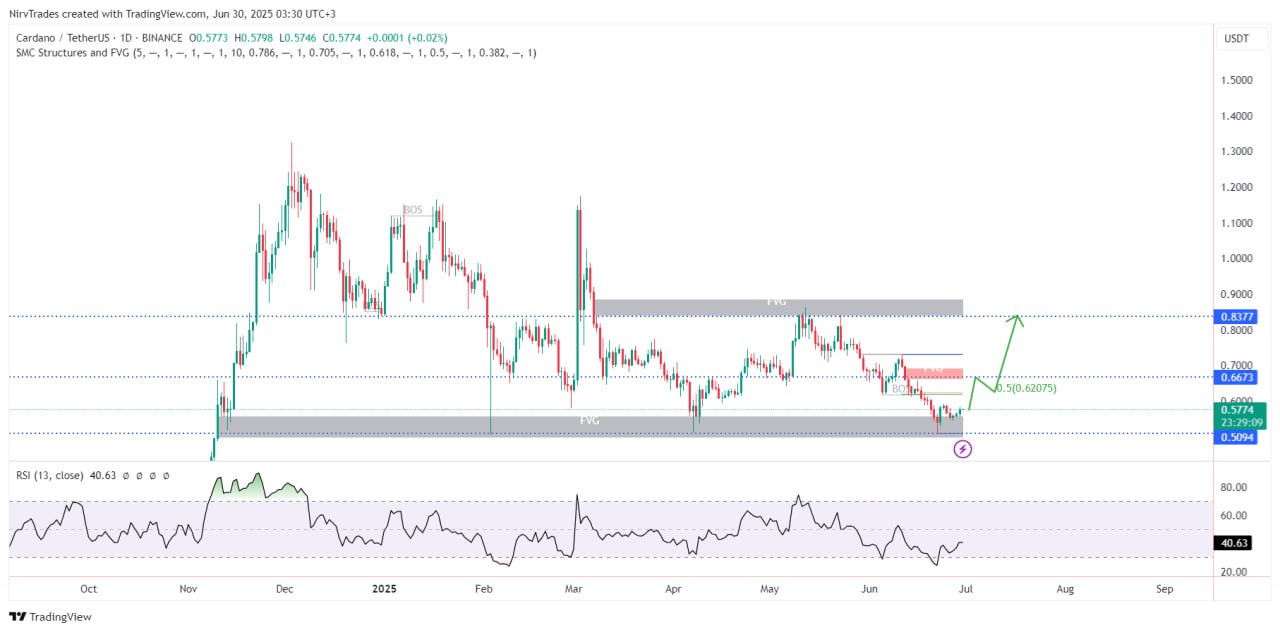
These three altcoins—Ethereum, Solana, and Cardano—are recommended by analysts for 2025 based on strong fundamentals, active development, and positive technical signals. Traders seeking crypto trading opportunities should keep a close eye on their performance.
Is Bitcoin preparing for a new peak?
Table of Contents
- Introduction
- History of Bitcoin
- How Bitcoin Works
- Mining
- Buying and Using Bitcoin
- Price History and Market Impact
- Risks and Challenges
- Environmental Impact
- Regulations and Legal Status
- Technical Analysis
- Conclusion
Introduction
Bitcoin is the first decentralized cryptocurrency. It appeared in 2008 from a person or group of unknown identity called Satoshi Nakamoto, and it relies on peer-to-peer technology, which facilitates instant financial transactions without intermediaries such as banks. It is the first cryptocurrency in the world, but as a financial asset it comes with high price volatility and regulatory challenges, making it exciting for traders.
History of Bitcoin
Bitcoin began on August 18, 2008, with the registration of Bitcoin.org. On January 3, 2009, the first block was mined, which included a critique of the traditional financial system. Nine days later, the first transaction took place between Nakamoto and Hal Finney for 10 bitcoins. On May 22, 2010, Laszlo Hanyecz bought two pizzas for 10,000 bitcoins, a day now known as "Pizza Day." By 2010, Nakamoto had mined about one million bitcoins before disappearing, leaving the project to developers such as Gavin Andresen.
How Bitcoin Works
Bitcoin is based on blockchain technology, a distributed ledger that records transactions transparently. Each block contains transactions, a timestamp, and a reference to the previous block using cryptographic algorithms. Transactions are verified through encryption to prevent double spending. Mining involves solving complex mathematical problems to add new blocks, with the current reward (2024) set at 3.125 bitcoins per block, halving every 210,000 blocks (approximately every four years).
Mining
Mining requires powerful hardware such as ASICs, and miners often join pools like Foundry Digital to increase their chances of earning rewards. Companies like CleanSpark operate thousands of mining devices. Solo mining is possible but less profitable due to high competition.
Buying and Using Bitcoin
Bitcoin can be purchased on platforms such as Coinbase or Binance. You can buy small fractions (called satoshis, which are 1/100,000,000 of a bitcoin). It is stored in digital wallets (software or hardware). Although accepted by some merchants, its use in commerce is very limited, and it is mostly used as an investment or a store of value for traders.
Price History and Market Impact
Bitcoin experiences significant price fluctuations. Its market capitalization reached $2.1 trillion in February 2021, and the unit price surpassed $100,000 in December 2024.
Risks and Challenges
Risks include strong price volatility, with the price moving by thousands of dollars daily; vulnerability of exchanges to hacking; and the lack of government-backed insurance. About 20 percent of bitcoins are lost due to misplaced wallets. Regulations vary: nine countries had banned Bitcoin by 2021, and India banned exchanges in 2023. In the United States, there were no specific regulations as of 2024, while the European Union implemented the MiCA regulation in 2023.
Environmental Impact
Mining consumes about 0.5 percent of global electricity and contributes 0.08 percent of greenhouse gas emissions, with 50 percent of energy sourced from fossil fuels. Mining also generates electronic waste.
Regulations and Legal Status
Bitcoin has been legal tender in El Salvador since 2021 and the Central African Republic since 2022, though the IMF has called for El Salvador to repeal that status. Countries like China and Algeria have completely banned Bitcoin, while others lack clear regulatory frameworks.
Technical Analysis
Technically, Bitcoin has been trending upward and is forming an AB=CD harmonic pattern whose completion is near $130,176.75. On the daily chart, it appears to be correcting its recent rally in a sideways range between $111,880 as resistance and $97,845 as support. Having bounced upward from that support zone, there is a likelihood of continued ascent toward resistance levels and an attempt to break through them, supported by the RSI holding above 50.
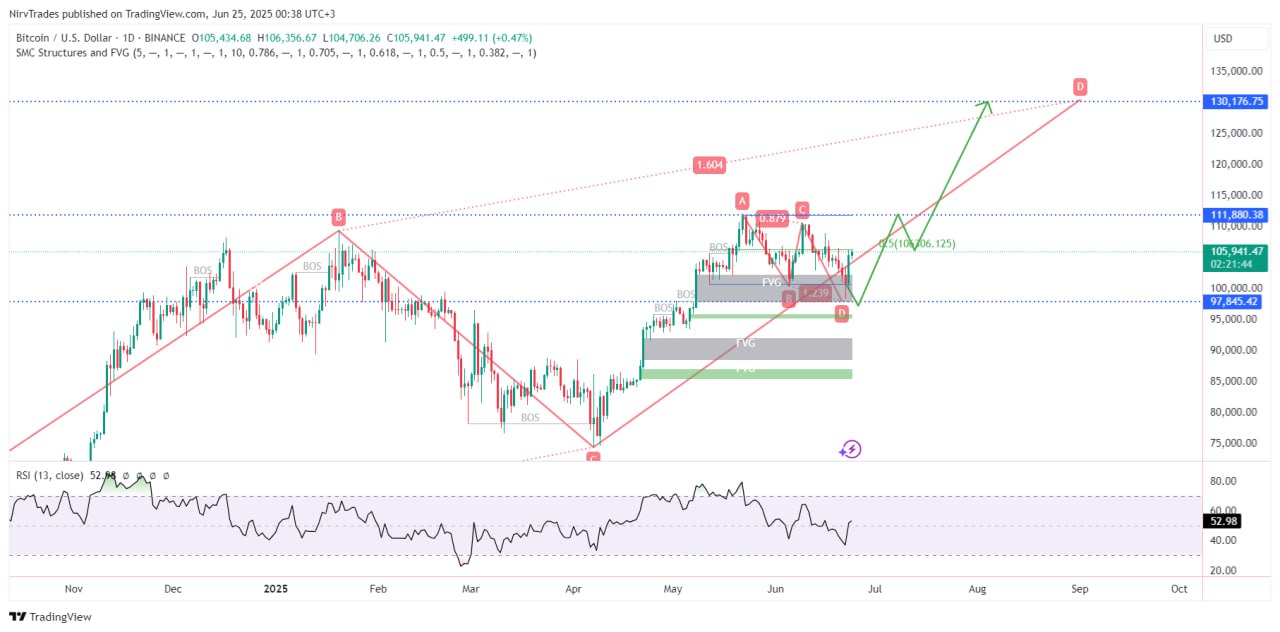
Conclusion
In the end, Bitcoin represents a financial revolution offering a decentralized alternative to fiat currencies. From its humble beginnings to its massive market value, Bitcoin remains at the center of attention for traders and investors. Yet with opportunities come challenges such as volatility, security risks, and environmental impact. For enthusiasts of price analysis and harmonic trading, Bitcoin provides an exciting arena, but one that demands caution and deep market understanding.
Oil in 2025: Prices, Reserves, and Economic & Geopolitical Factors
Introduction
Oil remains a cornerstone of the global economy and continues to be subject to significant volatility due to economic and geopolitical factors. This report aims to review the current oil price, reserves of producing countries, production and trade activity, and oil price forecasts for 2025.
Current Price
As of June 2025, Brent crude is priced at approximately $70 per barrel, experiencing slight fluctuations due to geopolitical tensions in the Middle East. Prices have recently surged on fears of escalation between Iran and Israel but remain within the $65–75 range, influenced by global oversupply and increased production from countries like Saudi Arabia.
Reserves of Producing Countries
Owning massive oil reserves strengthens the global market influence of producing countries. According to OPEC, Venezuela holds the largest reserves at 303.8 billion barrels, followed by Saudi Arabia with 258.6 billion barrels, Iran with 208.6 billion barrels, Iraq with 145.0 billion barrels, and the UAE with 113.0 billion barrels. In Q1 2025, global oil production rose to 104.9 million barrels per day, up by 1.8 million barrels per day, driven by increased output from OPEC+ nations, especially Saudi Arabia.
Production and Trade Activity
OPEC+, led by Saudi Arabia and Russia, agreed to cut production by 1.66 million barrels per day until the end of 2025 to support price stability. However, Saudi Arabia has announced plans to raise output, potentially exerting downward pressure on prices due to surplus. Russian exports have been affected by Western sanctions, reducing its market share, while countries like the UAE and Qatar have boosted foreign investments supported by financial surpluses. Non-compliance with output quotas by some OPEC+ members adds to market volatility.
Oil Movement Amid Wars
Geopolitical conflicts, including the Russia-Ukraine war and unrest in the Middle East, significantly affect oil prices. The Russia-Ukraine conflict, ongoing since 2022, triggered sanctions that limited Russian oil exports and pressured global supply. In the Middle East, current tensions like the Gaza conflict and escalating friction between Iran and Israel have caused temporary price spikes due to supply disruption fears. These conflicts heighten uncertainty, prompting markets to monitor geopolitical developments closely.
Oil Price Forecast 2025
- U.S. Energy Information Administration (EIA): Forecasts Brent crude will average $75 per barrel in Q3 2025, potentially declining to $68 in 2026 due to rising global supply.
- National Bank of Kuwait: Projects an average of $70 per barrel in 2025, noting that prices will remain relatively low due to supply surplus.
- Citi Bank: Raised its oil forecast for 2025 due to geopolitical risks, particularly involving Russia and Iran. However, it warns of possible price drops if tensions ease.
- Global Economics Unit: Expects Brent to average $80.8 per barrel in 2025, supported by a stronger dollar and increased emerging market demand, while warning that supply surplus may cap price gains.
Economic and Geopolitical Factors
- Inflation and U.S. Dollar Strength: A stronger dollar pressures oil prices, while rising demand in emerging markets offsets it.
- Geopolitical tensions: Supply disruption fears drive price spikes.
- OPEC+ policies: Decisions to increase or cut production directly impact price stability.
Conclusion
In 2025, oil remains a strategic commodity influenced by supply-demand dynamics and geopolitical developments. With a current price around $70 per barrel and forecasts ranging from $60 to $80.8, oil is highly sensitive to global events. Geopolitical conflicts such as the Russia-Ukraine war and Middle East tensions offer temporary price support, but increasing output from OPEC+ may limit gains. It is recommended to follow geopolitical updates and OPEC+ strategies to better understand market direction.


